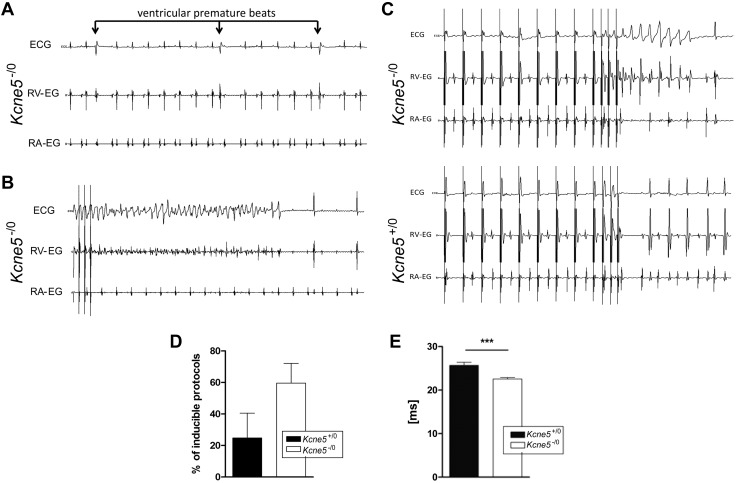Figure 2 .
Kcne5 deletion causes ventricular arrhythmias. A) Spontaneously occurring monomorphic VPBs were detectable during continuous ECG monitoring in sedated live Kcne5−/0 mice. No such VPBs were found in Kcne5+/0 mice. Upper ECG curves represent body surface ECGs, middle ECG curves represent intracardiac ECG from the ventricular catheter, and lower ECG curves represent intracardiac ECG registration from the atrial catheter. Note postextrasystolic compensatory pauses after VPBs are pathognomonic for ventricular extrasystolic beats. B) A spontaneously occurring episode of polymorphic VT was noted in 1 Kcne5−/0 mouse. The episode could not be terminated by burst pacing (pacing spikes on the left). The VT finally converted into an atrial arrhythmia with a 2:1 and 3:1 atrioventricular conduction. C) Polymorphic VTs were inducible during continuous ECG monitoring of sedated live Kcne5−/0 mice. After a defined pacing protocol followed by 3 extrastimuli polymorphic VTs were highly inducible in Kcne5−/0 mice as compared to WT controls. Data for ECG curves were obtained as described in A. D) Percentage of inducible protocols was increased in Kcne5−/0 mice vs. WT controls. E) The ventricular effective refractory period was reduced in Kcne5−/0 mice vs. Kcne5+/0 controls. ***P < 0.001.

